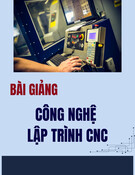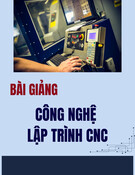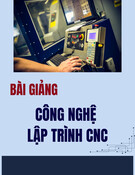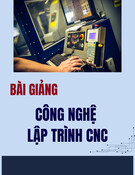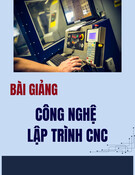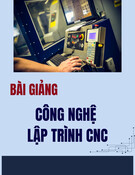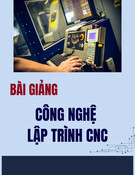
* Corresponding author.
E-mail addresses: Nematiuts@gmail.com (S. Nemati)
© 2020 Growing Science Ltd. All rights reserved.
doi: 10.5267/j.esm.2019.8.005
Engineering Solid Mechanics 8 (2020) 49-62
Contents lists available at GrowingScience
Engineering Solid Mechanics
homepage: www.GrowingScience.com/
esm
A state of the art on the structural performance of fabric formwork systems
Farzaneh Tahmooriana, Saeed Nematib* and Anahita Soleimanic
aSchool of Engineering and Technology, Central Queensland University, Australia
bWorld Civil Engineering Information Centre, Australia
cDessau international architecture, Hochschule Anhalt University, Germany
A R T I C L EI N F O A B S T R A C T
Article history:
Received 8 July, 2019
Accepted 22 August 2019
Available online
22
August
201
9
Fabric Formworks which are made using textile sheets such as Polyolefin, Polyesters/Polyethylene
Terephthalate, nylon and Polypropylene are being used instead of conventional formworks in the
construction industry. This article summarises significant studies and provides an updated review
of references on the structural performance of fabric formworks over the last decade. The survey
showed that they could be categorised into seven themes; namely, “Feasibility studies and
manufacturing methods of complex structural elements”; “Finite element modelling, structural
optimizing and form-finding themes”; “Pneumatic / Vacuumatic formwork theme”; “Durability,
sustainability, efficiency and quality improvement”; “Cable-net fabric formwork theme”; “Stay-
in-place structural formworks theme”; and “Review papers”. These categories comprise about
25%, 17%, 15%, 15%, 10%, 6% and 6% of related studies respectively.
© 20
20
Growing Science Ltd. All rights reserved.
Keywords:
Fabric formwork
Flexible formwork
Durability
Structural aspects
Non-prismatic members
1. Introduction
Generally speaking, about 50% of the total cost of concrete structures is related to the formwork
material and its system. Almost, all of the traditional formworks are made using rigid materials such as
wood and steel. However, today, flexible formworks are being used instead of conventional formworks
in building construction. Fabric formworks are the most common type of flexible formworks. Fabric
Formwork is made using textile materials such as polyolefin, nylon, polyesters/polyethylene
terephthalate (PET), and polypropylene (PP) (Nemati et al. 2017). Most of the vital factors regarding the
needed specification of a proper formwork can be addressed by fabric formworks. In architectural and
building construction applications fabric formwork provides a simple method of making complex double
curvature forms. Thus, fabric formwork has been considered as an alternative to conventional formwork
(Nemati et al. 2018). Concurrent with the development of fabric formwork, some excellent ideas have
been combined with architectural concepts, and structural performance consists a part of them. In the
civil engineering industry, the idea of fabric formwork has not yet found a common application. This
article summarises significant studies and provides an updated review of references on the structural
themes of fabric formworks over 2010 to 2019.

50
2. Review papers
Orr et al. (2010) provided the state of the art review and a summary of design methods, previous
works, experimental data and optimization processes in fabric formed beams. Veenendaal (2010) gave a
brief overview of what fabric formwork technology entails as well as an overview of applications and
research efforts. Also, in similar research, Veenendaal et al. (2011) studied the history of concrete casting
in the fabric formwork over the past century. Pedreschi et al. (2014) presented an overview of the
flexible/fabric formwork usage. Schmitz (2015) provided an updated review on the fabric formworks.
Besides, Hawkins et al. (2016) provided a detailed review of fabric formwork methods for complex
geometries.
3. Feasibility studies and manufacturing methods of complex structural elements
3.1 Feasibility studies
Verhaegh (2010) carried out a feasibility study on the free forms concrete segments using fabric
formwork and their ability to be used in structural members such as bridges and decks. The results show
the excellent ability of fabric formwork poured segments for use in structures. Veenendaal et al. (2011)
conducted a feasibility studied on the casting methods of prestressed fabric formed beams and trusses
using an AOP (automatic optimization process). Orr et al. (2013a) and Ibell et al. (2013) studied the
feasibility of fabric formwork to create the extraordinary possibility of highly optimized architecturally
concrete structures. Also, Feng et al. (2013) described the feasibility of marine application of fabric
formworks. Schipper and Grünewald (2014) studied and demonstrated the ecological feasibility of an
innovative production system to produce double-curved building shapes using flexible formworks. Lee
et al. (2015) conducted feasibility and constructability study of free-form concrete structures considering
time, cost, quality and safety. Also, Schipper (2015) studied on fabric formworks and technical notes of
the flexible formwork method to build the double-curved precast structural concrete elements during his
doctoral degree thesis. He showed that flexible formworks are suitable for double-curved concrete
members.
3.2 Manufacturing methods
West (2016) provided a comprehensive handbook on flexible formworks technology. He provided a
guidance for model and design of fabric-formed structures. Christian et al. (2010) described a digitally
controlled formwork for double-curved surfaces using digital CAD model. Schipper and Janssen (2011)
studied construction methods of double-curved pre-constructed panels using fabric/flexible formwork.
They reported on the structural models that have been developed to describe the behavior of flexible
formwork material accurately. Orr et al. (2011a) and Orr (2012) have presented the practical points of
use and construction methods of non-orthogonal fabric formed structural elements. In a co-conception
research, (Pedreschi et al. 2011, Pedreschi 2013) presented the outcome of a prolonged series of studies
on the construction of fabric formworks. Also, Orr et al. (2012a) studied ultra-high performance fiber
reinforced concrete elements construction methods using fabric formwork. Belton (2012) studied the
tensile membranes as flexible formwork using digital tools. His work demonstrated a process of a fast
and economic system to design and construction of geometrical complex cast in place structures. Cauberg
et al. (2012) studied construction methods of doubly curved shell elements using textile reinforced
concrete and fabric formwork. Prousalidou (2012) showed 3D scanning methods could improve the
efficiency/ accuracy of prediction the cast material behavior based on geometric principles and the type
of fabric. Bhooshan and El Sayed (2012) presented a customised designer-friendly workflow using
subdivision surfaces and attempts to construct two shell proto-types so designed with different formwork
methods, fabric, and waffle. They subsequently compared the benefits and challenges of both.
Hawkswood (2012) described the various aspects of fabric formwork technology and systems used in
marine construction. Verwimp et al. (2014) presented the analysis and constructing method of TRC
(textile reinforced cement) composites formwork and TRC reinforcement of synclastic concrete shells
under their self-weight. They showed that local buckling is the critical parameter for the TRC thickness.

F. Tahmoorian et al. / Engineering Solid Mechanics 8 (2020)
51
Spadea et al. (2015) attempted to completely replace the internal steel reinforcement of concrete beams
with fiber-reinforced polymer (FRP) reinforcement. They explained the consideration of the
manufacturing steps, construction methods, and structural design requirements. Culver et al. (2016)
presented an economical workflow realizing a network of parametric geometry using a robotically-
controlled system for fabric formworks. They considered the material limitation, structural properties,
and optimized load-path to provide a digitally informed geometry. Also, Yang et al. (2018) presented a
new fabric formwork system to work in conjunction with a 6-axis robotic arm for casting doubly curved
structural panels. Liew et al. (2018) described a prototype rod-fabric system, including the fabrication,
shape control, and measurement of the nodal coordinates via theodolite. Table 1, summarizes the
previous works in this regard.
Table 1. Feasibility studies and manufacturing methods of complex structural elements
Ref. Investigated parameters
Verhaegh (2010)
free forms concrete segments behavior
Christian et al. (2010)
cost
Veenendaal et al. (2011)
interaction of prestressed fabric and wet concrete
Schipper and Janssen (2011)
structural mechanics mod
els
Orr et al. (2011a)
construction methods
Pedreschi et al. (2011)
surface texture
design methods
development and construction methods
structural tests
Orr (2012)
construction methods
Orr et al. (2012a)
methods for manufacturing ultra
-
high performance fiber reinforced concrete elements
Belton (2012)
applica
tion of actively tensile membranes as formwork
Cauberg et al. (2012)
shell elements of TRC
Prousalidou (2012)
the behavior of cast material
Bhooshan and El Sayed (2012)
customized workflow
Hawkswood (2012)
different aspects of fabric formwork systems us
ed in marine construction
Pedreschi (2013)
surface texture
design methods
development and construction methods
structural tests
Orr et al. (2013)
optimized architecturally concrete structures
Ibell et al. (2013)
optimized
architecturally concrete structures
Feng et al. (2013)
marine application
Schipper and Grünewald (2014)
ecological potential
Verwimp et al. (2014)
construction of synclastic concrete shells using TRC composites
Lee et al. (2015)
cost
time
quality
safety
Schipper (2015)
production methods
Spadea et al. (2015)
manufacturing process
construction methods
technical design requirements
West (2016)
instruction and guidance on modelling and design
Culver et al. (2016)
material constraints
structural weaknesses
load
-
path optimization
Yang et al. (2018)
robotic casting methods
Liew et al. (2018)
spatial coordinates of the markers and the node locations
4. Finite element modelling, structural optimizing and form-finding themes
4.1 Modelling and optimising
Garbett et al. (2010) described how free-formed members could be optimally designed and
constructed. Orr et al. ( 2011) studied optimization, design and shape prediction methods of fabric formed
concrete beams. They tested two 2m span beams using steel and fiber-reinforced polymer reinforcing

52
bars. Results showed that both beams exceeded their design capacity and showed similar behavior at the
serviceability limit state. Block Research Group (BRG) (BRG 2012) explored the fundamental analysis
and design of geotextile or coated fabric made formworks. Orr et al. (2011b) and Orr (2012) presented
fabric formed concrete beams shape prediction method and optimization procedure. Also, Orr et al.
(2012a) illustrated some methods for the optimized design of ultra-high performance fiber reinforced
concrete elements using fabric formwork and structural tests. Hashemian (2012) studied the structural
behavior and optimization of reinforced concrete beams. The outcome of the final phase of this study
was the creation of the third generation of curved beams with a camber. These beams, designated as
Cambered Curve beams (CCBs), exhibited the same behavior as the rectangular control beam. The CCB
moment-shaped beams require 20% less concrete and 40% less reinforcing steel (no shear stirrups) to
carry the ultimate load, which is only 12% less than that carried by the control beam. A significant part
of this research was to modify and verify a FORTRAN-based finite element analysis program: FINIT-
Y. This program was reconstructed to analyze a full-size beam and enabled the researcher to model and
correctly predict the maximum load, crack pattern, and failure mode. This study found that moment-
shaped beams with no shear reinforcement have the same stiffness and load-carrying capacity as
rectangular control beam with shear reinforcement up to serviceability failure (Span/360). The study also
found that moment-shaped beams have significantly lower ductility at the ultimate load. Bak et al. (2012)
presented a new methodology for the construction and design of optimized fabric formed concrete
members. Orr et al. (2012b) worked on the design of fabric formed structural members and discussed the
shear behavior of non-prismatic steel-reinforced concrete beams too. Also, Orr et al. (2014) presented a
new optimized design system for fabric formed simple concrete beams. They achieved to material
savings of up to 40%, considering all limit states. They demonstrated the interdependency of design
method with the construction system too. In a similar work, Sarieddine (2014) provided a method for
optimization of fabric formed concrete beams design using an analytical optimization method and a
feasible region method. He showed that savings of up to 55% in material cost could be accomplished
using fabric formed beams. Prayudhi et al. (2015) designed a column using topology optimization method
and an unconventional fabrication method.
4.2 Form finding
Foster (2010) studied on a method to predict the structural behavior and the shape of fabric formed
beams. Analyses, including (and neglecting) the contribution of concrete in tensile behavior are found to
overestimate beam stiffness (and underestimated beam stiffness and ductility). Veenendaal and Block
(2011) discussed and compare the surface stress and force density, stiffness matrix, and dynamic
relaxation form-finding methods. Van Mele and Block (2011) introduced a new form-finding approach
based on Thrust Network Analysis (TNA) and Force Density Method (FDM) for the design of pre-
stressed structural flexible moulds for concrete shells. In an investigation by Hawkins et al. (2016),
several small scale fabric cast concrete beams were made using ‘keel mould’ and ‘free hanging’ methods
and some form-finding tools were also developed. Foster and Ibell (2016) detailed a new digital method
for determining the geometry of a flexible, impermeable, and inextensible hanging fabric subject to the
wet concrete hydrostatic pressure and its accuracy was determined too. Table 2 summarizes the previous
works published for Finite element modeling, structural optimizing and form-finding themes.
Table 2. Finite element modelling, structural optimizing and form-finding themes
Ref.
Investigated parameters
Garbett et al. (2010)
structural optimization
Foster (2010)
2D profile of a hanging fabric container
stiffness
ductility
Veenendaal and Block (2011)
stiffness matrix
force and surface stress density
dynamic relaxation
Van Mele and Block (2011)
Force Density Method (FDM)
Thrust Network Analysis (TNA)
Orr et al. (2011a)
the latest methods for the design, optimization and form prediction of fabric
formed concrete beams
Orr et al. (2011b)
techniques for optimization

F. Tahmoorian et al. / Engineering Solid Mechanics 8 (2020)
53
Table 2. Finite element modelling, structural optimizing and form-finding themes (Continued)
Ref.
Investigated parameters
Orr (2012)
techniques for optimization
Orr et al. (2012a)
methods for the design, optimization and construction
BRG (2012)
integral analysis and design
Hashemian (2012)
stiffness
concrete measurement
reinforcing steel percentage
load-carrying capacity
crack pattern
failure mode
ductility
Bak et al. (2012)
topological optimization algorithms
computational form-finding
economical shape
manufacturability
practical casting techniques
Orr et al. (2012b)
shear behavior of non
-
prismatic steel
-
reinforced concrete beams
Orr et al. (2014)
an iterative method for the design of structurally optimized beams considering all limit states
reinforcement detailing
methods to support the flexible formwork and alternative
support conditions
Sarieddine (2014)
analytical optimization method
feasible region method
Prayudhi et al. (2015)
topology optimization method
Hawkins et al. (2016)
free hanging method
keel mould method
Foster and Ibell (2016)
form of fabric formworks subject to the hydrostatic load
5. Stay-in-place structural formworks theme
Brennan et al. (2013) explained the potential of advanced fabric formwork to provide better structural
performance and permeability. Also, dual-function permanent fabric formworks and internal woven
reinforcement and cavity systems are presented. Verbruggen et al. (2013) compared a fully steel
reinforced beam with a similar beam including shear reinforcement in TRC formwork. Results showed
similar yielding behavior for them. Verwimp et al. (2013) have presented the structural analysis of a
permanent formwork in TRC composites for concrete shells. Also, Verwimp et al. (2016) studied the
numerical evaluation of structural permanent formwork in TRC composite for concrete shells. They
showed formwork local buckling is the dominant factor and should drive future work towards this
problem. Popescu and coworkers (Popescu et al. 2016, 2018) introduced a new formwork system as a
labor and material reducing, and cost-effective way for building doubly-curved concrete members and
investigated its mechanical properties experimentally. Table 3 summarizes the previous works performed
on stay-in-place structural formworks theme.
Table 3. Stay-in-place structural formworks theme
Ref.
Investigated parameters
Brennan et al. (2013)
the potential of advanced textiles for fabric formwork
Verbruggen et al. (2013)
yielding behavior
cracking moment
Verwimp et al. (2013)
structural analysis and behaviour
Verwimp et al. (2016)
minimum thickness of the composite formwork and
reinforcement
local buckling of the formwork
Popescu et al. (2016)
material saving
labor reducing
cost
-
effective casting
Popescu et al. (2018)
material saving
labor reducing
cost
-
effective casting

![Bài tập tối ưu trong gia công cắt gọt [kèm lời giải chi tiết]](https://cdn.tailieu.vn/images/document/thumbnail/2025/20251129/dinhd8055/135x160/26351764558606.jpg)




